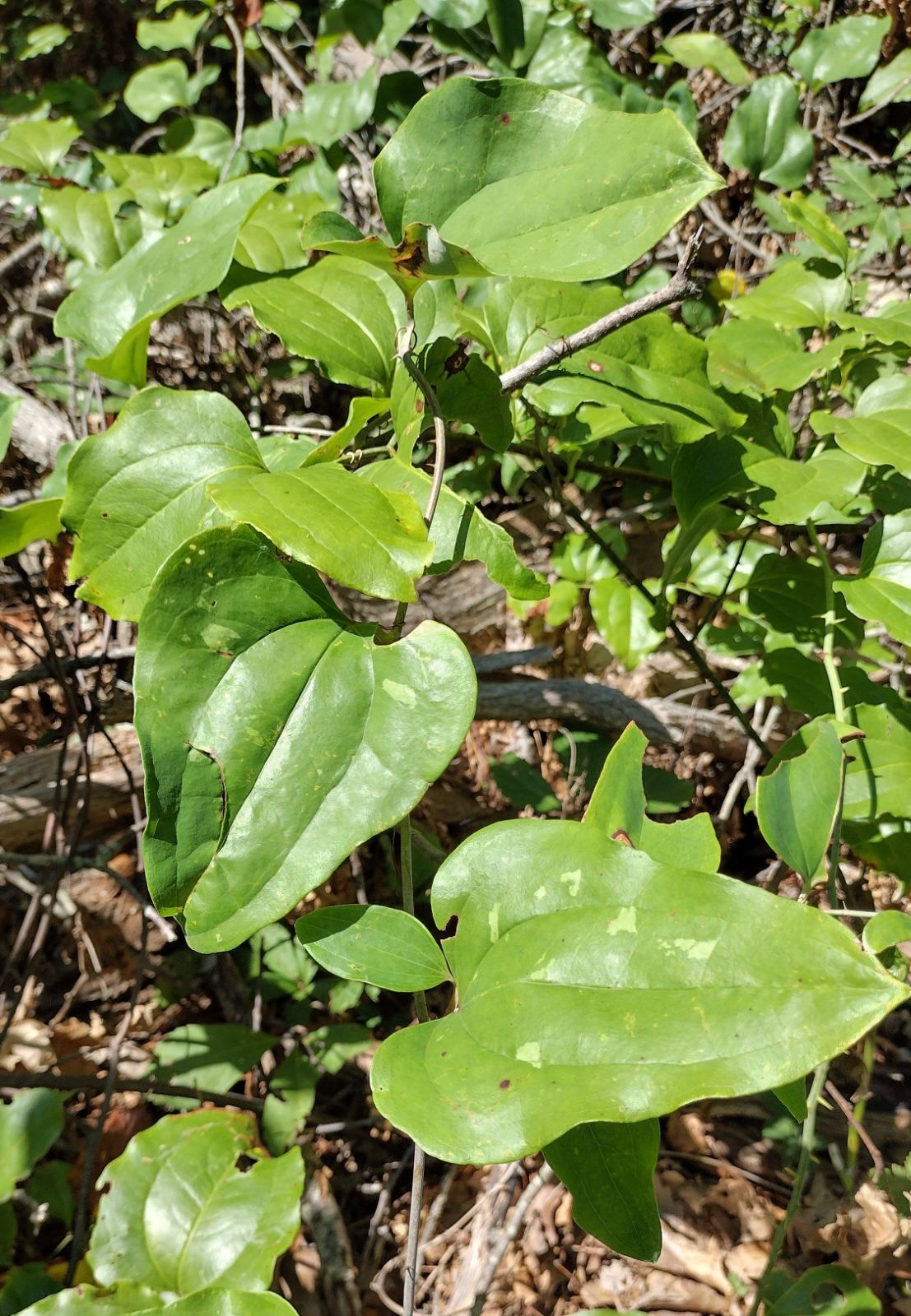Smilax hispida
Credits
Article from Bean's Trees and Shrubs Hardy in the British Isles
Recommended citation
'Smilax hispida' from the website Trees and Shrubs Online (treesandshrubsonline.
A climbing deciduous shrub, with round stems furnished with slender bristles and straight prickles, densely so towards the base; branches almost without them. Leaves heart-shaped or broadly ovate, 2 to 6 in. long, 11⁄2 to 41⁄2 in. wide, five- or sometimes nine-nerved, finely pointed, green on both sides, margins often minutely jagged; stalk 1⁄4 to 3⁄4 in. long. Flowers greenish yellow, borne on an umbel with a main-stalk 1 to 2 in. long. Berries blue-black, globose, about 1⁄4 in. wide.
Native of the eastern and central United States and Ontario; introduced early in the 18th century. This species thrives well in this country, and is well marked by its large leaves and very bristly stems.

